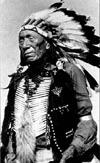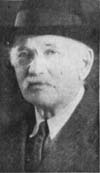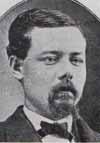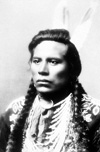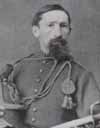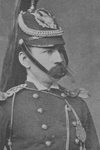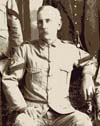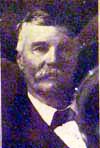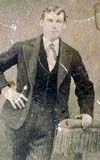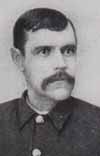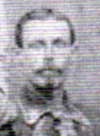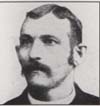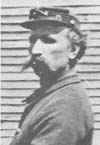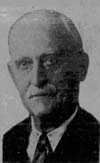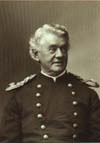Jan Moller, who was also known as James Moller, was born in Orsle, Denmark, on September 13, 1849. He was a Private in Company H who was wounded during the hilltop fight.
Nathan T. Brown died on September 13, 1877, at Canyon Creek, Montana Territory, during a battle with the Nez Perce. He was originally buried at Fort Assinniboine, Montana Territory, and was reinterred on March 27, 1905, in the Custer National Cemetery on Crow Agency in Montana.

Emil Taube (left) married Mary Adams on September 13, 1882. He was a Private in Company K who was not present at the battle due to detached service.
Joseph C. Bates committed suicide in Sturgis, South Dakota, on September 13, 1893, and was buried in the Bear Butte Cemetery there. He was a Private in Company M who participated in the valley and hilltop fights.

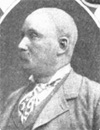
Richard P. Hanley (left) died on September 13, 1923, in Boston, Massachusetts, and was buried in the Holy Cross Cemetery in Malden, Massachusetts. He was a Sergeant with Company C who was with the pack train and in the hilltop fight. He was awarded the Medal of Honor for his actions during the battle.
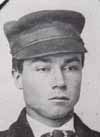
Hobert Ryder died in Wheeling, West Virginia, sometime after September 14, 1893. He was a Private in Company M who participated in the valley and hilltop fights.
Isaac Fowler (left) was born on September 15, 1844, in Darke County, Ohio. He was a Private with Company C who was with the pack train and in the hilltop fight.
Thomas O’Brien died of typhoid fever at Fort Buford, Dakota Territory, on September 15, 1876. He was initially buried in the Post Cemetery there and was later reinterred in the Custer National Cemetery, Crow Agency, Montana.
Henry Charles Weihe was born on September 16, 1847, in Saxony, Germany. He was a Sergeant in Company M who participated in the valley fight and was wounded during the hilltop fight.
Algernon Emory Smith (left) was born on September 17, 1842, in Newport, New York. He was a First Lieutenant in command of Company E who died with Custer’s Column.
The Treaty of Fort Laramie was concluded on September 17, 1851. When it was before the Senate for ratification, certain amendments were made which required the assent of the Tribes, but the assent was not obtained. Congress appropriated money for the fulfillment of the Treaty’s stipulations, but its validity was questioned.
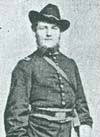
James Montgomery Bell (left) died in Hermosa Beach, California, on September 17, 1919, and was buried in the San Francisco National Cemetery (The Presidio). He was a First Lieutenant of Company D who was on leave at the time of the battle.
James Lawler died on September 18, 1877, at Canyon Creek, Montana Territory. He was a Private in Company H who was not present at the battle due to detached service.
Ferdinand Widmayer died in Riverton, New Jersey, on September 18, 1913, and was buried in the Epworth United Methodist Cemetery in Palmyra, New Jersey. He was a Private in Company M who was not present at the battle due to detached service.
George W. Glenn, who was also known as George W. Glease, died on September 18, 1914, in Richmond, Virginia, and was buried in the Hampton National Cemetery in Hampton, Virginia. He was a Private in Company H who participated in the hilltop fight.
David McWilliams committed suicide on September 19, 1882, at Fort Meade, South Dakota, and was buried in the Fort Meade National Cemetery. He was a Private in Company H who was not present at the battle due to being shot in his leg while aboard the Far West.
George Anderson died of lip cancer in Minneapolis, Minnesota, on September 19, 1912, and was buried the next day in the Minneapolis Pioneers and Soldiers Memorial Cemetery. He was a Private in Company K who was not present at the battle due to detached service.
Alexander Browne Bishop died on September 19, 1935, in Brooklyn, New York, and was buried in The Evergreens Cemetery in Brooklyn, Kings County, New York. He was a Corporal in Company H who was wounded in the hilltop fight.


